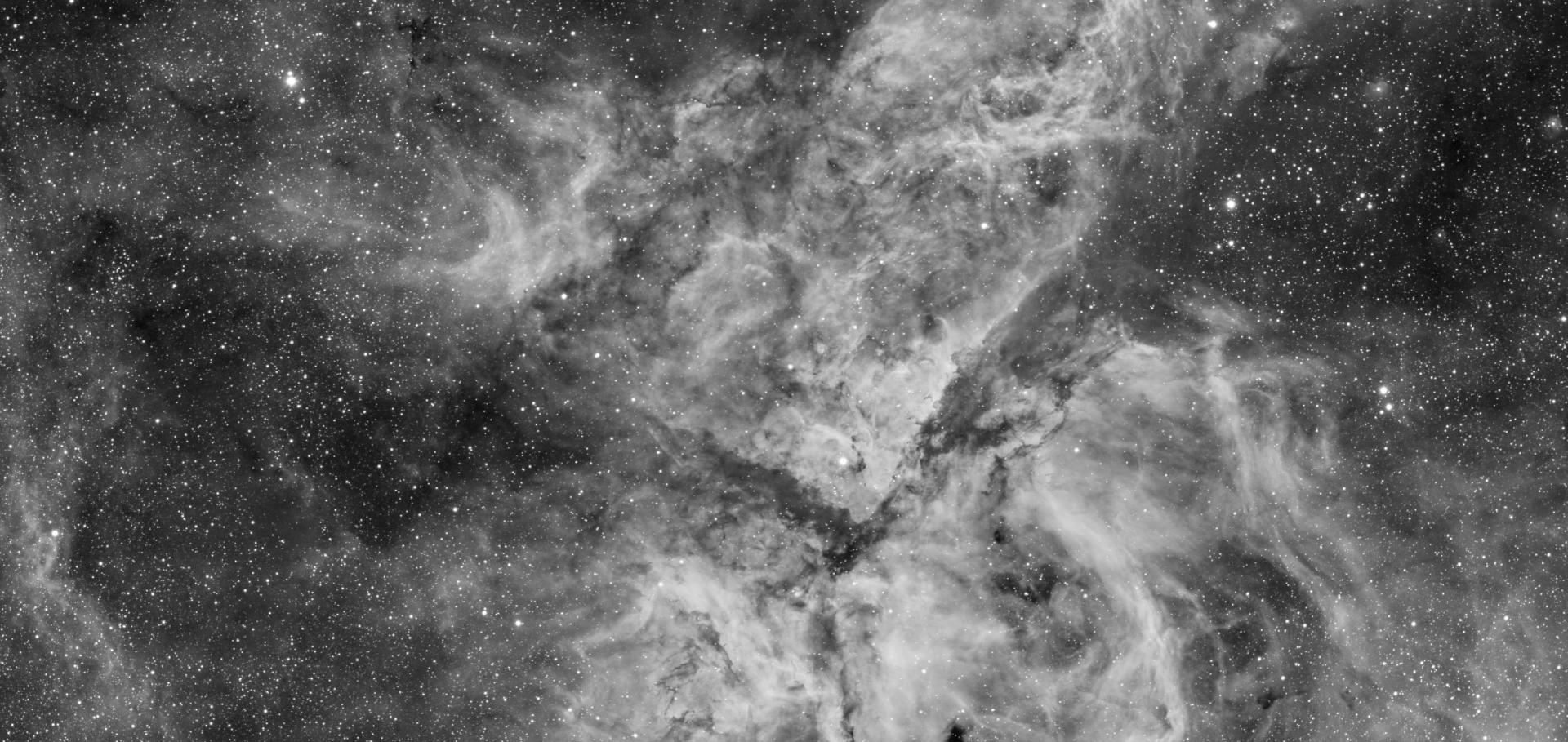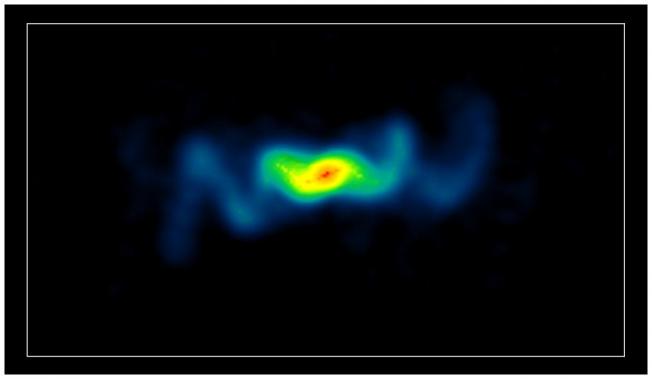On the origin of radio core emission in radio-quiet quasars
Astrophysical Journal 668:2 PART 2 (2007)
Abstract:
We present a model for the radio emission from radio-quiet quasar nuclei. We show that a thermal origin for the high brightness temperature, flat spectrum point sources (known as radio "cores") is possible provided that the emitting region is hot and optically thin. We hence demonstrate that optically thin bremsstrahlung from a slow, dense disk wind can make a significant contribution to the observed levels of radio core emission. This is a much more satisfactory explanation, particularly for sources where there is no evidence of a jet, than a sequence of self-absorbed synchrotron components that collectively conspire to give a flat spectrum. Furthermore, such core phenomena are already observed directly via milliarcsecond radio imaging of the Galactic microquasar SS 433 and the active galaxy NGC 1068. We contend that radio-emitting disk winds must be operating at some level in radio-loud quasars and radio galaxies as well (although in these cases, observations of the radio cores are frequently contaminated/dominated by synchrotron emission from jet knots). This interpretation of radio core emission mandates mass accretion rates that are substantially higher than Eddington. Moreover, acknowledgment of this mass-loss mechanism as an AGN feedback process has important implications for the input of energy and hot gas into the intergalactic medium (IGM) since it is considerably less directional than that from jets. © 2007. The American Astronomical Society. All rights reserved.Determining the nature of the faint X-ray source population near the Galactic Centre
REV MEX AST ASTR 29 (2007) 54-56
Abstract:
We present results of a multi-wavelength program to study the faint discrete X-ray source population discovered by Chandra in the Galactic Centre (GC). From IR imaging obtained with the VLT we identify candidate K-band counterparts to 75% of the X-ray sources in our sample. By combining follow-up VLT K-band spectroscopy of a subset of these candidate counterparts with the magnitude limits of our photometric survey, we suggest that only a small percentage of the sources are HMXBs, while the majority are likely to be canonical LMXBs and CVs at the distance of the GC. In addition, we present our discovery of highly structured small-scale (5-15 '') extinction towards the Galactic Centre. This is the finest-scale extinction study of the Galactic Centre to date.Galactic centre X-ray sources
AIP CONF PROC 924 (2007) 893-896
Abstract:
We report on a campaign to identify the counterparts to the population of X-ray sources discovered at the centre of our Galaxy by Wang et al. [7] using Chandra. We have used deep, near infrared images obtained on VLT/ISAAC to identify candidate counterparts as astrometric matches to the X-ray positions. Follow up K-S-band spectroscopic observations of the candidate counterparts are used to search for accretions signatures in the spectrum, namely the Brackett-gamma emission line [1]. From our small initial sample, it appears that only a small percentage, similar to 2-3% of the similar to 1000 X-ray sources are high mass X-ray binaries or wind accreting neutron stars, and that the vast majority will be shown to be canonical low mass X-ray binaries and cataclysmic variables.The 6C** sample of steep-spectrum radio sources: II - Redshift distribution and the space density of high-redshift radio galaxies
ArXiv astro-ph/0612268 (2006)
Abstract:
We use the 6C** sample to investigate the co-moving space density of powerful, steep-spectrum radio sources. This sample, consisting of 68 objects, has virtually complete K-band photometry and spectroscopic redshifts for 32 per cent of the sources. In order to find its complete redshift distribution, we develop a method of redshift estimation based on the K-z diagram of the 3CRR, 6CE, 6C* and 7CRS radio galaxies. Based on this method, we derive redshift probability density functions for all the optically identified sources in the 6C** sample. Using a combination of spectroscopic and estimated redshifts, we select the most radio luminous sources in the sample. Their redshift distribution is then compared with the predictions of the radio luminosity function of Jarvis et al. We find that, within the uncertainties associated with the estimation method, the data are consistent with a constant co-moving space density of steep-spectrum radio sources beyond z > 2.5, and rule out a steep decline.The 6C** sample of steep-spectrum radio sources: II - Redshift distribution and the space density of high-redshift radio galaxies
(2006)



